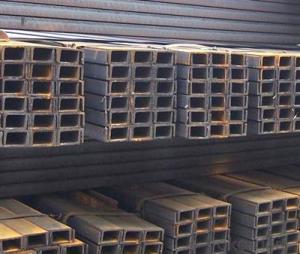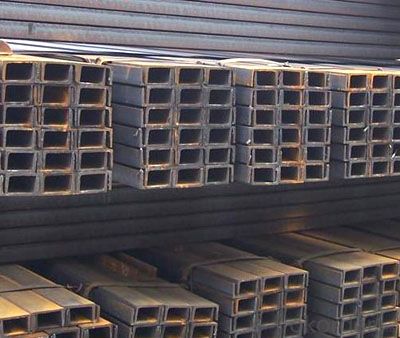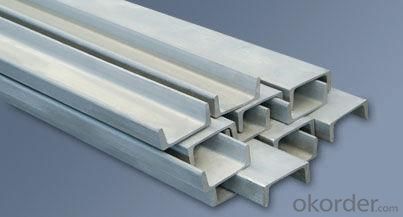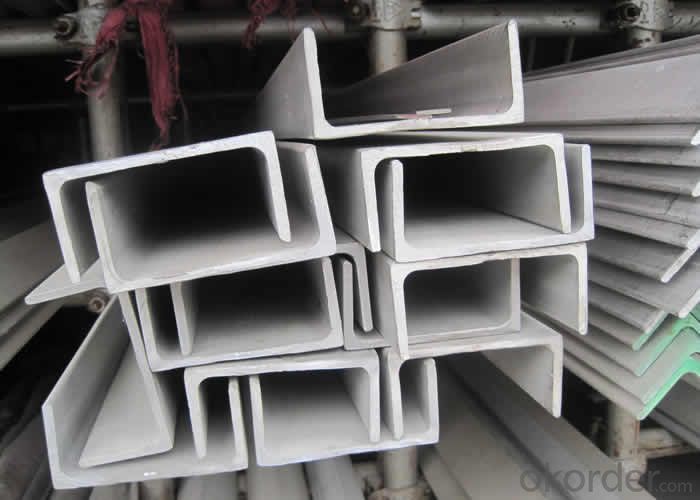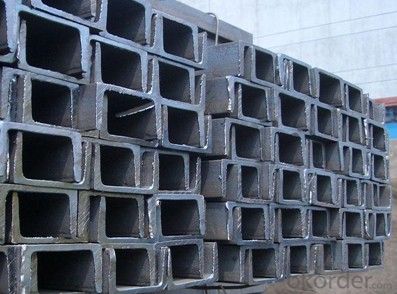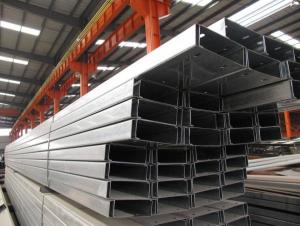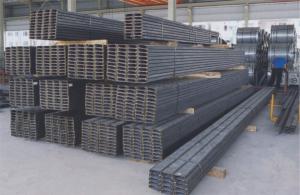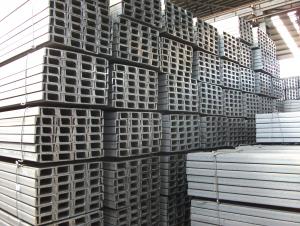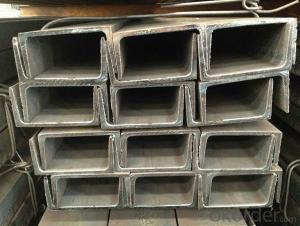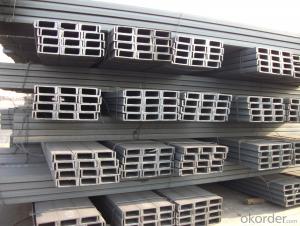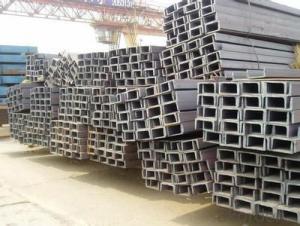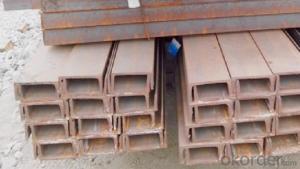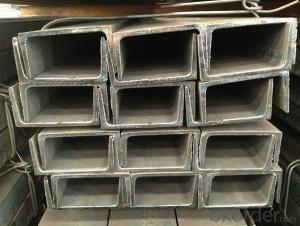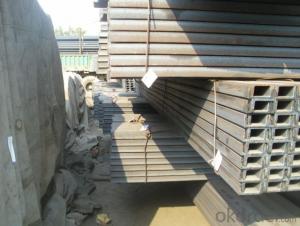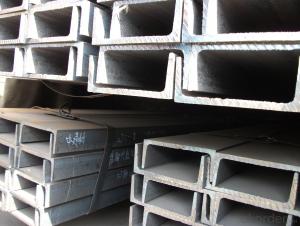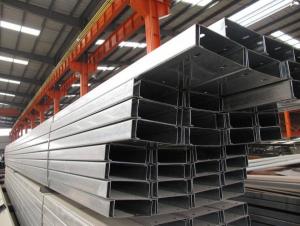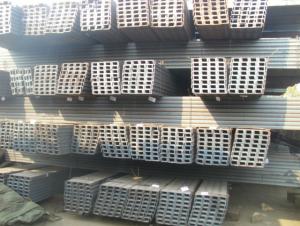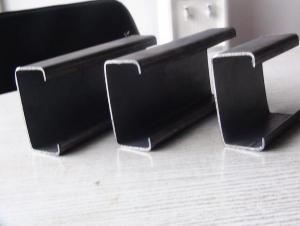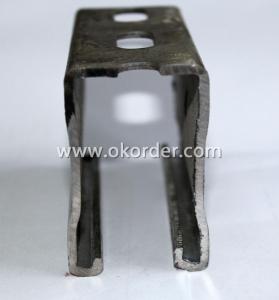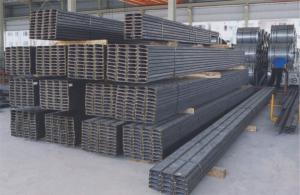Hot Rolled Channel Steel Module of GB JIS Standard
- Loading Port:
- Tianjin
- Payment Terms:
- TT OR LC
- Min Order Qty:
- 3000 PCS
- Supply Capability:
- 42000 PCS/month
OKorder Service Pledge
OKorder Financial Service
You Might Also Like
JIS Standard Hot Rolled Channel Steel Details
Standard: | BS,GB,JIS | Dimensions: | 50*25MM-250*90MM | Grade: | Q235 |
Color: | black | Perforated Or Not: | Not Perforated | Model Number: | 50*25MM-250*90MM |
Shape: | CHANNEL | Application: | SHIPPING,BUILDNG |
Packaging & Delivery
Packaging Detail: | MIill's export standard packing in bundles with wire rod as customer's requirement |
Delivery Detail: | about 10-30 days after reciving the L/C |
JIS Standard Hot Rolled Channel Steel Specification
JIS STANDARD CHANNEL | |||||||
Size (mm) | T (mm) | b (mm) | Theoretical Weight (kg/m) | Size (mm) | T (mm) | b (mm) | Theoretical Weight (kg/m) |
50*25 | 3.00~5.00 | 6 | 2.37~3.46 | 125*65 | 5.3 | 6.8 | 12.17 |
75*40 | 3.8 | 7 | 5.3 | 125*65 | 5.5 | 8 | 12.91 |
75*40 | 4 | 7 | 5.6 | 125*65 | 6 | 8 | 13.4 |
75*40 | 4.5 | 7 | 5.85 | 150*75 | 5.5 | 7.3 | 14.66 |
75*40 | 5 | 7 | 6.92 | 150*75 | 5.7 | 10 | 16.71 |
100*50 | 3.8 | 6 | 7.3 | 150*75 | 6 | 10 | 17.9 |
100*50 | 4.2 | 6 | 8.03 | 150*75 | 6.5 | 10 | 18.6 |
100*50 | 4.5 | 7.5 | 8.97 | 150*75 | 9 | 12.5 | 24 |
100*50 | 5 | 7.5 | 9.36 | 200*80 | 7.5 | 11. | 24.6 |
125*65 | 5.2 | 6.8 | 11.66 | 250*90 | 9 | 13 | 34.6 |
Length=6-12meters SS400 or Q235 | |||||||
JIS Standard Hot Rolled Channel Steel Pictures
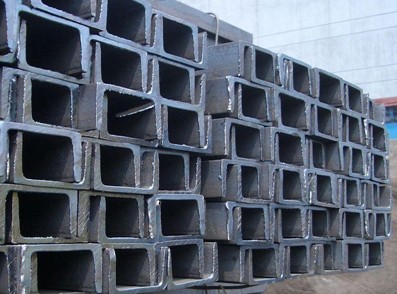
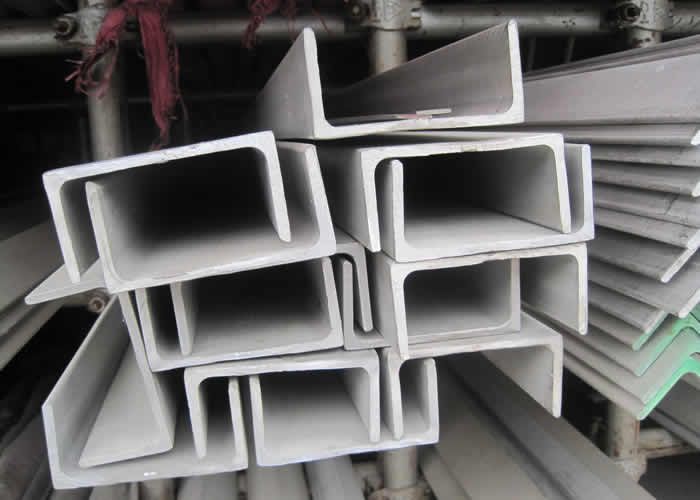
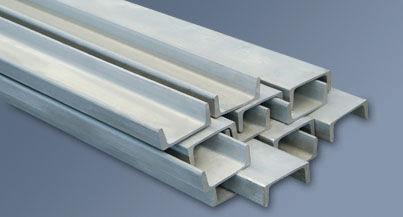
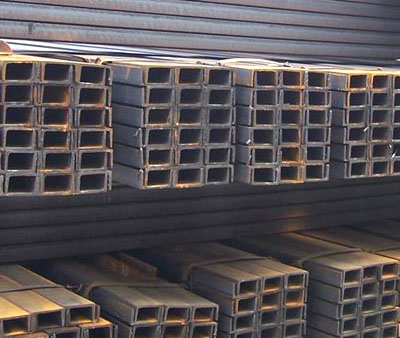
- Q: How are steel channels used in the construction of shopping malls or retail centers?
- Steel channels are commonly used in the construction of shopping malls or retail centers for a variety of purposes. These channels, which are long and narrow metal beams with a "U" or "C" shape, offer several advantages in terms of strength, versatility, and cost-effectiveness. One of the primary uses of steel channels in the construction of shopping malls or retail centers is for structural support. These channels can be used to create the framework or skeleton of the building, providing stability and rigidity to the overall structure. Steel channels are known for their high tensile strength and load-bearing capacity, making them an ideal choice for supporting heavy loads such as the weight of multiple floors, ceilings, and roofs. Another application of steel channels in shopping mall construction is for the installation of mechanical, electrical, and plumbing (MEP) systems. These channels can be used to conceal and protect various utility lines, such as electrical cables, HVAC ducts, and plumbing pipes. Steel channels provide a secure and organized way to route these systems throughout the building, ensuring they are hidden from view while still easily accessible for maintenance or repairs. In addition to structural support and MEP installations, steel channels can also be utilized for the construction of partitions and walls within shopping malls or retail centers. These channels can serve as studs or tracks, forming the framework for interior walls or dividing spaces. By using steel channels for partition walls, builders can create flexible layouts that can easily be modified or reconfigured as needed, accommodating the ever-changing needs of commercial tenants. Moreover, steel channels are often employed in the construction of mezzanine floors or elevated platforms within shopping malls or retail centers. Mezzanine floors can be added to maximize the available space and provide additional retail or storage areas. Steel channels are used to create the supporting structure for these elevated platforms, ensuring they can withstand the weight of people, products, and equipment. Overall, steel channels play a crucial role in the construction of shopping malls or retail centers by providing structural support, facilitating the installation of MEP systems, constructing interior walls, and enabling the creation of mezzanine floors. Their strength, versatility, and cost-effectiveness make them an essential component in modern commercial construction, allowing for efficient and durable building solutions.
- Q: Are steel channels suitable for solar panel installations?
- Solar panel installations can indeed make use of steel channels. These channels, also referred to as steel C-channels or U-channels, are widely utilized as mounting structures for solar panels. They provide a robust and long-lasting support system that guarantees the stability and durability of the panels. The reason why steel channels are preferred for solar panel installations lies in their high strength-to-weight ratio. This characteristic enables them to endure diverse environmental conditions. They also possess outstanding resistance to corrosion, a crucial factor for outdoor installations that are exposed to rain, snow, and humidity. Furthermore, steel channels can be customized and fabricated to fit specific solar panel dimensions, which allows for easy and secure attachment. Another advantage of steel channels is their cost-effectiveness compared to other mounting options, such as aluminum or stainless steel. They are readily available in the market and can be conveniently installed by professionals. Additionally, the versatility of steel channels makes them suitable for both ground-mounted and rooftop solar panel installations. To sum it up, steel channels are a trustworthy and appropriate choice for solar panel installations. Their strength, durability, resistance to corrosion, cost-effectiveness, and ease of installation make them an ideal option for providing support to solar panels and ensuring their optimal performance.
- Q: Are steel channels suitable for use in the construction of machinery frames?
- The utilization of steel channels is widespread in the construction of machinery frames owing to their remarkable strength, durability, and versatility. These channels not only offer exceptional structural support but also have the ability to endure substantial loads, thus making them ideal for bearing the weight and various constituents of machinery. Moreover, steel channels permit flexibility in design, thereby enabling customization to fulfill specific requirements of the machinery frame. Furthermore, they possess resistance against corrosion and can withstand harsh environmental conditions, guaranteeing steadfast functionality and dependability in the long run. In conclusion, steel channels emerge as a dependable choice for the construction of machinery frames, providing stability, strength, and longevity.
- Q: How do steel channels contribute to the overall sustainability of a construction project?
- There are several ways in which steel channels contribute to the overall sustainability of a construction project. To begin with, they are manufactured using recycled materials, which reduces the demand for new resources and lessens the environmental impact of mining and processing raw materials. This helps conserve natural resources and reduces the energy needed for production, making steel channels a more sustainable choice. In addition, steel channels have a lengthy lifespan and require minimal maintenance. They are highly durable and resistant to corrosion, enabling them to withstand harsh weather conditions and endure for many years without needing replacement or frequent repairs. This reduces the overall use of materials and generation of waste, making the construction project more sustainable in the long term. Moreover, steel channels are lightweight and easy to transport. This decreases energy consumption and greenhouse gas emissions related to transportation, as less fuel is needed to move them from the manufacturing facility to the construction site. Furthermore, their lightweight nature makes them easier to handle and install, reducing the necessity for heavy machinery and the associated energy consumption during the construction process. Lastly, steel channels can be easily recycled at the end of their lifespan. Unlike other construction materials, steel can be melted down and reused multiple times without losing its properties. This not only reduces the amount of waste sent to landfills but also diminishes the need for new steel production, further conserving natural resources and decreasing environmental impact. To conclude, steel channels contribute to the overall sustainability of a construction project through their use of recycled materials, long lifespan, lightweight and easy transportability, and recyclability at the end of their life. By incorporating steel channels into construction projects, we can reduce environmental impact, conserve natural resources, and promote a more sustainable built environment.
- Q: Can steel channels be used for overhead garage doors?
- Yes, steel channels can be used for overhead garage doors. Steel channels are commonly used in the construction of overhead garage doors due to their strength, durability, and ability to withstand heavy loads.
- Q: Can steel channels be used for machinery platforms?
- Indeed, machinery platforms can make use of steel channels. Owing to their robustness and endurance, steel channels are frequently employed in construction and industrial settings. They furnish structural reinforcement and steadfastness, rendering them suitable for bolstering weighty machinery and equipment atop platforms. Moreover, steel channels can be conveniently shaped and tailored to fulfill precise prerequisites, encompassing the dimensions and load-bearing capability indispensable for machinery platforms.
- Q: What are the different methods for protecting steel channels from UV radiation?
- There are various ways to safeguard steel channels from UV radiation. 1. Painting: Applying a UV-resistant paint coating on the steel channels is a common method. These paints contain special additives that reflect or absorb UV radiation, preventing it from reaching the steel and causing deterioration. 2. Powder coating: Another effective technique is powder coating. This involves applying dry powder electrostatically to the steel's surface and then heating it to create a protective coating. Powder coatings come in different colors and finishes, many of which offer excellent UV resistance. 3. Galvanization: Galvanizing steel channels is a popular method for shielding them from UV radiation and corrosion. It involves coating the steel with a layer of zinc, which acts as a sacrificial barrier against UV rays and other environmental factors, significantly prolonging the channels' lifespan. 4. UV-resistant coatings: Specialized UV-resistant coatings designed for steel protection can be found in the market. These coatings are typically applied as a liquid and create a thin, transparent layer on the steel's surface. They provide outstanding UV protection while maintaining the channels' appearance. 5. Protective films: Protective films or tapes can also be used to shield steel channels from UV radiation. These films are directly applied to the steel's surface and act as a barrier against UV rays. They are easy to install and remove, making them a cost-effective temporary protection solution. Choosing the most suitable method depends on the specific application and requirements. Factors such as the level of UV exposure, desired lifespan, and aesthetic considerations should be taken into account when selecting a method to protect steel channels from UV radiation.
- Q: How do steel channels compare to other structural materials like wood or concrete?
- Steel channels have several advantages over other structural materials like wood or concrete. Firstly, steel channels have superior strength and durability compared to wood. Steel has a high tensile strength, meaning it can withstand heavy loads and pressures without bending or breaking. In contrast, wood is more susceptible to warping, rotting, and insect damage over time. Secondly, steel channels offer greater design flexibility and versatility compared to concrete. Steel can be easily shaped and molded into various sizes and dimensions, allowing for more intricate and complex designs. Concrete, on the other hand, requires formwork and curing time, limiting its aesthetic options. Additionally, steel channels have a higher fire resistance compared to both wood and concrete. Steel does not burn or contribute to the spread of flames, making it a safer choice for structural applications. Wood is highly flammable and can quickly ignite, while concrete may crack or spall under extreme heat. Furthermore, steel channels have a longer lifespan and require less maintenance compared to wood or concrete. Steel is resistant to weathering, corrosion, and pests, reducing the need for regular repairs or replacements. Wood and concrete, on the other hand, may require regular sealing, painting, or patching to prevent deterioration. Lastly, steel channels offer better sustainability and environmental benefits compared to wood or concrete. Steel is a highly recyclable material, and using recycled steel in construction reduces the need for new extraction. Additionally, steel structures can be disassembled and reused, minimizing waste. Wood requires harvesting of trees, which can contribute to deforestation, while concrete production has a significant carbon footprint. In summary, steel channels outperform wood and concrete in terms of strength, durability, design flexibility, fire resistance, lifespan, maintenance, and sustainability. These advantages make steel channels a preferred choice for various structural applications.
- Q: Can steel channels be used for platform stairs?
- Indeed, platform stairs can make use of steel channels. In construction, steel channels are commonly employed for their robustness and endurance. They offer exceptional structural reinforcement, rendering them apt for stairs and platforms, particularly in industrial or commercial environments with anticipated heavy loads and frequent utilization. Fabricating and welding steel channels is a straightforward process, resulting in a stable and dependable staircase. Moreover, customization is attainable to meet precise design specifications, encompassing desired height, width, and angle of the stairs. Ultimately, the strength, versatility, and capability to endure substantial foot traffic solidify steel channels as a favored selection for platform stairs.
- Q: Can steel channels be used for roof truss systems?
- Roof truss systems can indeed utilize steel channels. These channels, also referred to as C-channels or U-channels, are widely employed in construction due to their robustness and durability. They can be shaped and sized to fit various requirements, making them suitable for a range of applications, including roof truss systems. Steel channels offer exceptional structural support, making them well-suited for carrying the weight of a roof and evenly distributing it across the truss system. Moreover, steel channels boast a high resistance to corrosion, which is vital for enduring the elements and ensuring the long lifespan of the roof truss system. All in all, steel channels present a dependable and effective option for the construction of roof truss systems.
Send your message to us
Hot Rolled Channel Steel Module of GB JIS Standard
- Loading Port:
- Tianjin
- Payment Terms:
- TT OR LC
- Min Order Qty:
- 3000 PCS
- Supply Capability:
- 42000 PCS/month
OKorder Service Pledge
OKorder Financial Service
Similar products
Hot products
Hot Searches
Related keywords
